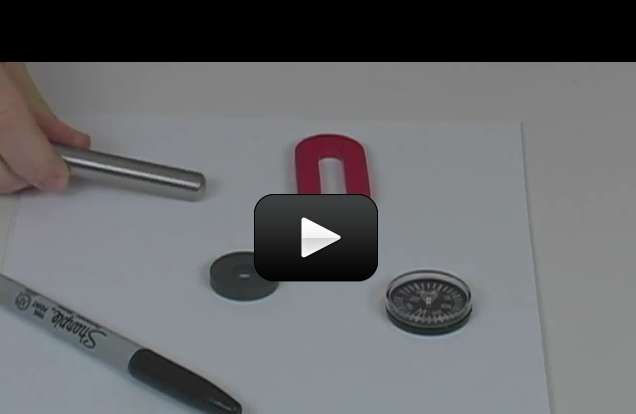You’re going to use a compass to figure out the magnetic lines of force from a magnet by mapping the two different poles and how the lines of force connect the two. A magnetic field must come from a north pole of a magnet and go to a south pole of a magnet (or atoms that have turned to the magnetic field.)
Compasses are influenced by magnetic lines of force. These lines are not necessarily straight. When they bend, the compass needle moves. The Earth has a huge magnetic field. The Earth has a weak magnetic force. The magnetic field comes from the moving electrons in the currents of the Earth’s molten core. The Earth has a north and a south magnetic pole which is different from the geographic North and South Pole.
Materials
- Bar magnet
- Horseshoe magnet
- Circular (disk) magnet
- Compass
- String
- Ruler


Hi! Cool experiment. Can you please explain question and answer 4 in the exercises?
Thanks!
what way is the nedonel faceing judah 8
Let’s say that there are two planets with unusually powerful magnetic fields about to crash into each other at a moderate speed. But, there is a catch. These planets are about to collide with either their north poles together, or their south poles together. Will these planets hit each other like two normal planets, or, will the magnetic fields react and cause the planets to deflect away from each other? Thank you.
Nathan J. G.